February 25th 2018
We are now in New Zealand after a three month trip back to Bristol. It was wonderful to be home and to catch up with family and friends. We flew back to Auckland on February 14th, then spent a week living on Vega at the marina in Opua where she is out of the water on the hard, sorting out work that still needs to be done on the boat and planning our road trip around New Zealand.
We flew down to Christchurch in South Island yesterday and are staying in a very comfortable Airbnb. Tomorrow we pick up a hire car, with a bed in the back, that will be our home for four weeks whilst we tour round South Island.
My blog has been neglected as I last posted when we were about to leave Vava’u in Tonga and, although most of you will have realised by now that we made it safely to New Zealand, I need to catch up on our passage from Vava’u to New Zealand, to get up to date.
Thursday 12th October 2017 – Vava’u to Ha’apai, Tonga
The usual plan when leaving Vava’u to sail the 60 mile passage to Ha’apai, the next group of islands south, is to set off as early as possible to reach Ha’apai before dark. On the night before we left there were strong winds and we ended up in an anchorage further north than ideal and although the anchor seemed to hold well, when I snorkelled down to check it, it was wedged under a big rock. It looked secure so we had supper and headed to bed… rather late as I was keen to get my last blog posted. A disturbed night with Hugh worrying about whether the battery was charging (our dedicated battery which starts the engine had packed up), but we were up at 5am, whilst it was still dark , to leave. It took a while to get the anchor free from where it was firmly wedged, manoeuvring Vega to wiggle the chain backwards and forwards until the anchor finally pulled free from under the rock.
We had a great sail down until half way to Ha’apai when the wind died, as did our speed. With the boat rolling in cross swells we motored, but not hard enough. By the time we arrived at the north of the crescent of islands that constitute the main part of Ha’apai the gloomy, overcast afternoon was drawing in and it started to rain. We had planned to anchor in a bay there and I had already marked the waypoints on our charts, but in the worsening light it was hard to distinguish the sandy patches in the sea bed from the mainly rocky bottom. On our first attempt the anchor wouldn’t hold and came back up with a huge lump of coral firmly embedded in its flukes. A couple more failed attempts to get the anchor to hold in sand and we gave up. The reef was too close for comfort and it was a lee shore (the wind blowing onshore so if the anchor didn’t hold securely we could be blown onto the reef). With the light almost gone one option was to head back out to open sea and to wait out the night, alternating watches until daylight. But our friends on Jadean were ahead of us, already anchored off the main island of Lifuka, and when we called up Barry to see if he could advise us, he suggested we aim for the bay where they were anchored, as the Navionics charts and navigational nights were all reliable.
Motoring in the pitch black, moonless light, following waypoints that I entered on the chart, was exciting albeit somewhat tense. There were lights on the islands we passed then the red, flashing navigational light marking the large reef extending off Lifuka. As Barry had advised the charts and lights were accurate and we chatted to him intermittently on VHF until we were able to drop anchor in the sandy bottom, after two hours of motoring, in shallow waters near a cluster of other yachts, including Jadean. Pork chops for supper on board and we fell asleep half way through watching ‘A Fish called Wanda’.
Friday 13th to Sunday 15th 0ctober – Ha’apai, waiting to head south to New Zealand.
Ha’apai is where the Mutiny on the Bounty took place, in 1789. Hard to believe, it is such a low key group of little islands. Here Captain Bligh was put into an open boat with 18 of his loyal crew with minimum supplies and managed to navigate some 4,500 miles to Timor in Indonesia, with no charts. Fletcher Christian, in the meantime, returned to Tahiti in the Bounty with the mutineers and, with some Tahitian men and women, eventually landed on Pitcairn Island. What finally happened to them and the other mutineers is both a sorry story and in the case of Fletcher Christian, an enduring mystery.
The main town of Pangai was hot, dusty and rather dismal. As we tied up our dinghy at the jetty, the weekly supply ferry was in and kids were playing in the water. We checked in, and out, of Customs and Immigration and were relieved to find an ATM as we were low on Tongan pa’anga. We bought another SIM card to get more WiFi on the boat and had an excellent lunch (fish in coconut sauce) at the Mariners Café – the haunt of all visiting yachties – run by Magda, a Polish woman, who has lived in this out of the way place for ten years. Children and young people were spilling out of school, the boys wearing tupenu (a long sarong and much cooler than trousers in this heat). A boy was standing on his roof flying his kite and waved. The large Chinese supermarket stocked almost everything you could imagine, including a car battery which Hugh bought as back up, our engine starter battery having failed. I was overjoyed to buy a lettuce and a few apples.
Like all the other yachties here we have been following the words and wisdom of Met Bob – a New Zealand weather guru who publishes a weekly forecast of weather in the South Pacific and does recommendations as to the best time to do the 1,100 mile trip from Tonga, or Fiji, south to New Zealand. This passage has complicated and often quite dangerous weather systems rolling across eastward from Australia, which over the years have sunk yachts and claimed lives. Met Bob has achieved an almost mythical status amongst yachties and we were all hanging on the predictions of Bob Almighty, some of us even paying for individual passage plans. Should we leave on Sunday or wait another week? Who else was planning to leave, and when, we wanted to know.
The following morning we sailed down to the next island, Uoleva, as the wind was forecast to come up and it was much more sheltered there. It is a wide bay with a long stretch of sandy beach, the island covered with dense trees in which are hidden two eco-resorts, and with a gently sloping sandy bottom to the bay in which it was easy to anchor. By the afternoon there were 16 yachts at anchor, including friends on Jadean, SheSan and Loupan, most of who were waiting, like us, for the right ‘weather window’ to head south to New Zealand.
We went for a long walk along the beach and enjoyed our last tropical paradise for what might be a quite a while, then joined a group of other cruisers for sundowners on the beach at one of the eco resorts.
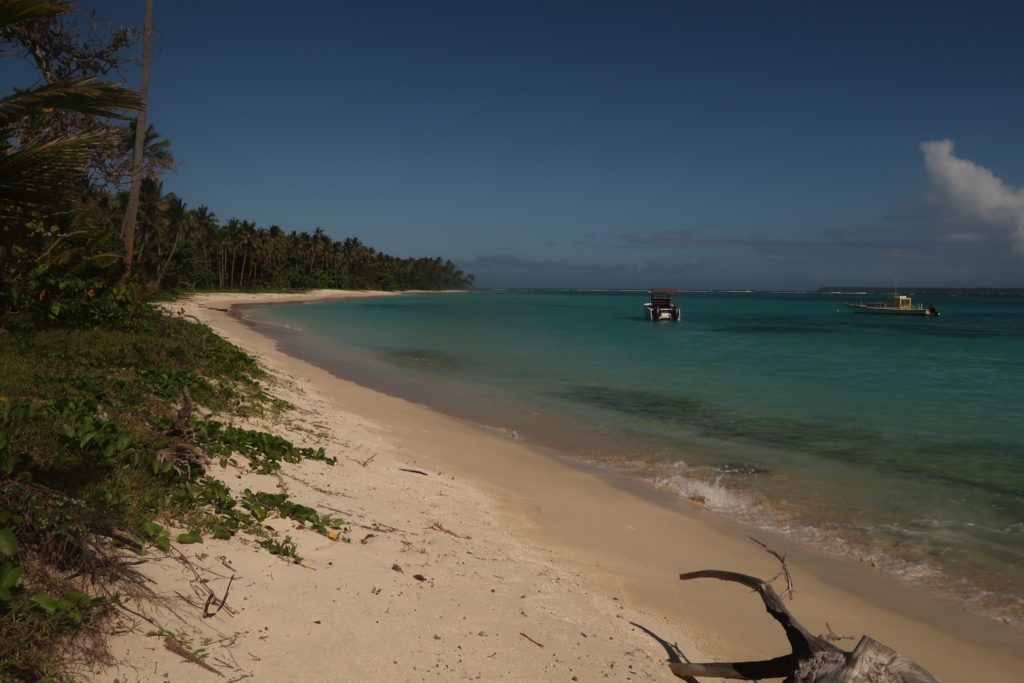
Sunday 15th to Tuesday 17th October – To Minerva Reef
We were finally ready and off at 9am, along with SheSan and Loupan, and with brisk winds were making good speeds of up to 7 knots once we got the mainsail up. Despite this we were soon left behind by the two faster boats. With good winds and moderate seas all was well until a sudden, unexpected roll to the boat flung me across the saloon and I hit my side hard against the chart table. Initially I was worried that I’d fractured some ribs but decided in the end that they were just badly bruised although they remained painful for the rest of the trip. Serious injury or illness at sea, days or weeks even away from land, is an ongoing concern particularly with only two of us sailing the boat, and I was relieved it wasn’t worse.
We had two great days of sailing south until the third day when the wind dropped and we had to motor hard at 6 knots to reach Minerva Reef, two submerged atolls 300 miles on the way to New Zealand, before dark. Ownership of North and South Minerva Reef has been disputed by Tonga and Fiji. Tonga had erected a light on the reef which the Fijian Navy blew up in 2010, but which was rebuilt by Tonga the following year and currently flashes out its warning light at night. The North Minerva Reef is some three miles long with a single pass which is straightforward to enter in daylight.
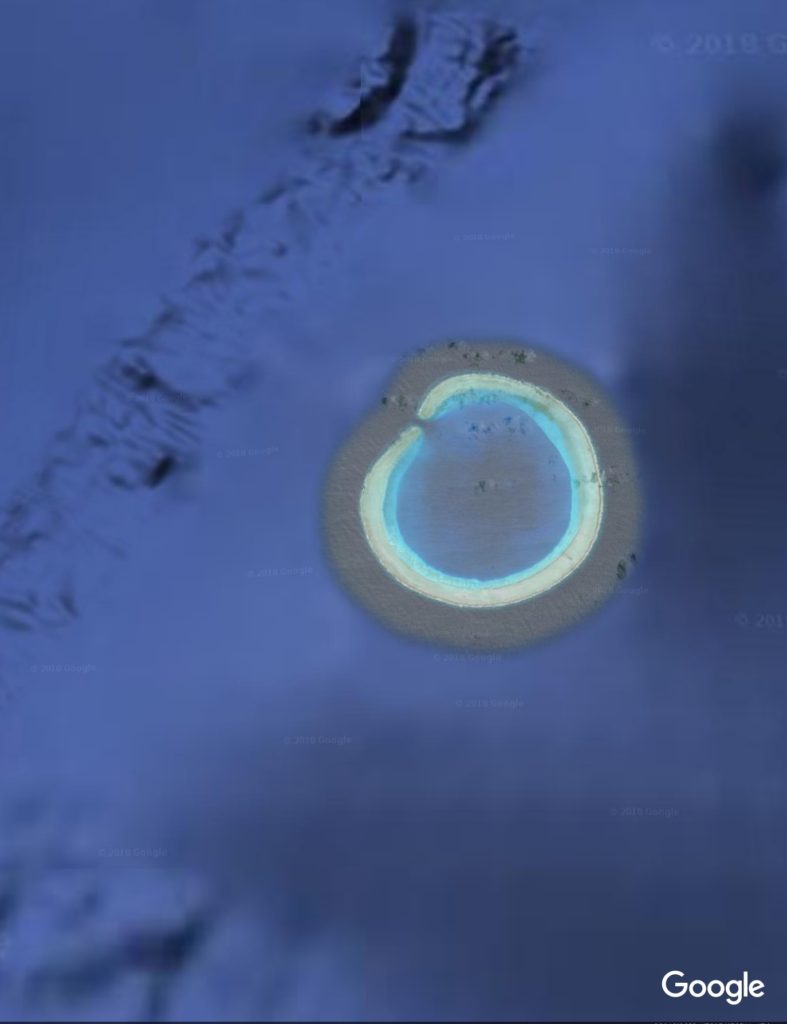
We arrived at dusk, crossed the lagoon and anchored in the shallower water near the reef. We had arranged to meet our friends on Nautilus and Duplicat, who had left from Tongatapu, the furthest south of the Tongan islands, and SheSan and Loupan were there too, having arrived well before us. We formed a small group of five yachts anchored within the isolated reef, getting some shelter from the waves as strong winds were forecast to blow through for the next few days. Supper was bean and lentil stew again, for the third night, that Hugh had made in the pressure cooker before we left (spiced up on the first night with a tin of turkey luncheon meat – which is as disgusting as it sounds).
The next morning it felt great to be at anchor amongst friends, the low reef surrounding us with a rim of breaking waves and the occasional jagged rock like sharks teeth protruding through the waves. We arranged with the other boats to meet at low tide by the lighthouse to go for a walk, and managed to find a way through the shallow, choppy waters close to the reef in the dinghy and pull it up by the remains of the old lighthouse. The reef was surprisingly wide, maybe 100 meters across, with a raised network of wet, soft, crumbly, pink coral underfoot which we picked our way across. The lighthouse is a structure rising above a solid concrete base, powered by solar panels, its light visible from 4 miles away.
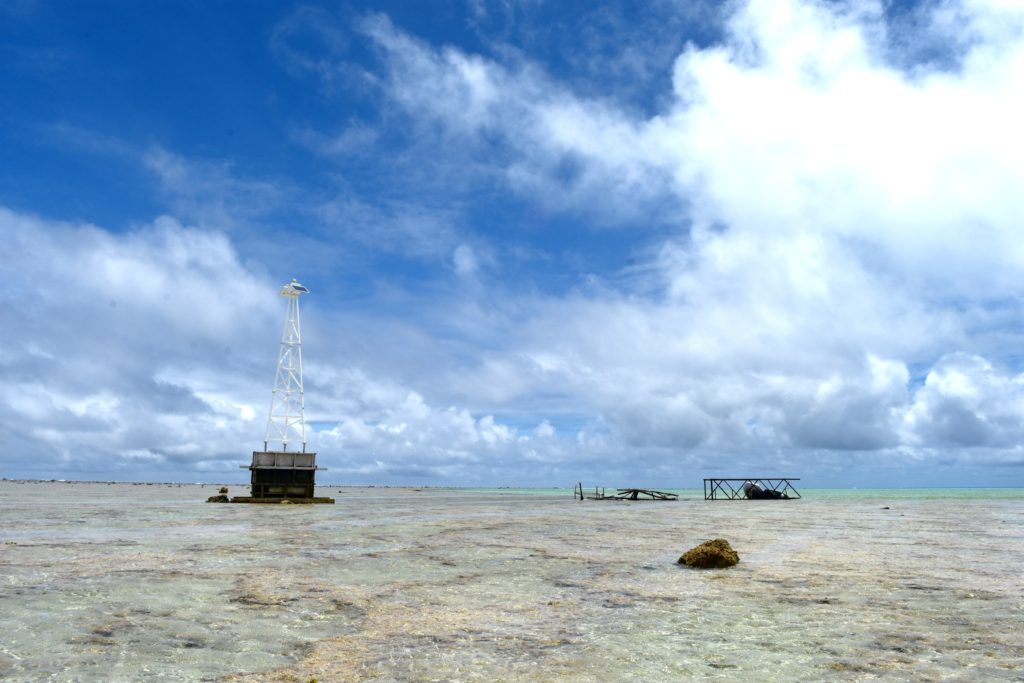
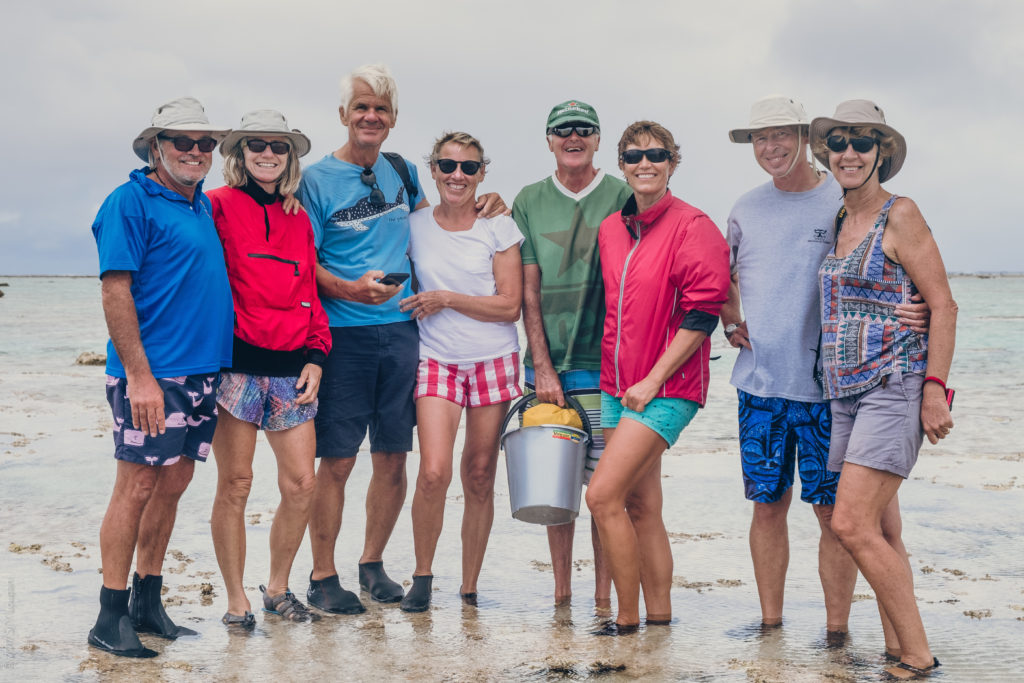
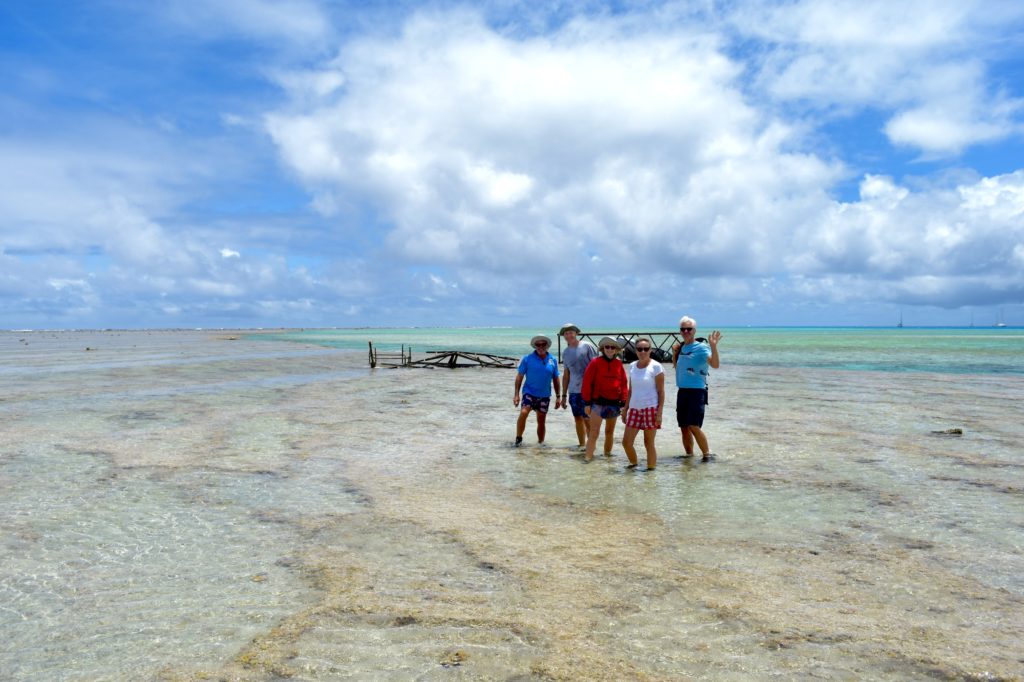
Reto and Angela told us a funny story of how they’d been scuba diving the previous day at the entrance to the reef and within ten minutes they were surrounded by hundreds of sharks circling them. When one of the sharks started to nibble on Reto’s fin and they saw a three meter white shark approaching, they decided it was time to surface and scrambled hastily back into their dinghy.
With the weather deteriorating and the wind increasing we hurried back to spend an afternoon on board Vega feeling snug and watching films.
The next morning we all met up on board Vega to passage plan the final leg on to New Zealand. Met Bob was suggesting we leave the next day as the stronger winds would be easing by then and there was a good weather window to push on south. That evening we all had sundowners on SheSan, and with the rum punch and beer flowing suddenly realised the wind and seas had come up. It was hairy trying to get back onto the dinghy then back onto Vega, especially after a few drinks, as they both reared and dropped in the steep waves.
Friday 20th to Saturday 28th October – On to New Zealand
The party over, the boats gradually left on the Friday morning, leaving Minerva Reef to the sharks again.
As we headed south it became gradually colder especially at night. Instead of t-shirts and shorts we had to don fleeces and warm trousers and climbed inside a sleeping bag to keep warm whilst on deck at night, covering our watch. At some point during the first night back at sea we passed from a longitude of 180deg west to 180deg east. I had failed to notice, so Hugh attempted to appease Neptune by giving him one of our last biscuits when he came on watch in the early hours.
On the third day at sea we had a dreadfully sad email to say that a very dear friend, Sheri, had died. We were both devastated as, although she had cancer, when I’d last seen her in July she seemed to be doing well and this news now was so unexpected. Feelings of loss, disbelief, great sorrow and particularly sadness for her two grownup children, Francis and Naomi, who had also lost their father to cancer earlier in the year. Feeling blessed for her friendship and that we had shared so many happy times with her and Charles over the years. Gratitude too for our own lives and good health.
The days and nights passed at sea. We emailed our friends on the other boats to compare daily positions, and watched them all gradually pull ahead of us. We mostly sailed but when the wind died we had enough diesel on board to be able to motor. In light winds we raised the cruising chute, in stronger winds we sailed with mainsail and poled out genoa. We read and played scrabble and kept in touch with home by satellite email, pleased to get news from family and friends.
The last three days at sea the wind almost completely dropped, with the occasional flying fish skimming the surface, performing a gentle arc and travelling for 100 yards above the flat, silvery sea. On our last night the sun set slowly in an almost cloudless sky and for a good 30 minutes after left a red and gold glow above the horizon.
We had been gradually running down our stocks of food on board. Our main provisioning for staples had been done back in Panama, eight months earlier, and we had some bags of pulses left which needed to be used up before New Zealand as they forbid any sprouting beans to be brought in. I emptied the lockers and unearthed tins of corned beef, luncheon meat and chilli (which Hugh loves and I don’t).
Two days away from New Zealand we chucked overboard the last of the lentils, chick peas and red kidney beans. We still had eggs, cheese, pasta, an apple, a few potatoes, three carrots and a withered green pepper. We ate pretty well… I made bread every few days and even made a cake with a packet of Betty Crocker cake mix (a cruisers’ staple) and the last two eggs. Suppers included pasta with tomato and olive sauce, rice and vegetables, pasta bake with tinned salmon and béchamel sauce, bean stew, pasta and bolognaise sauce, and… corned beef hash .
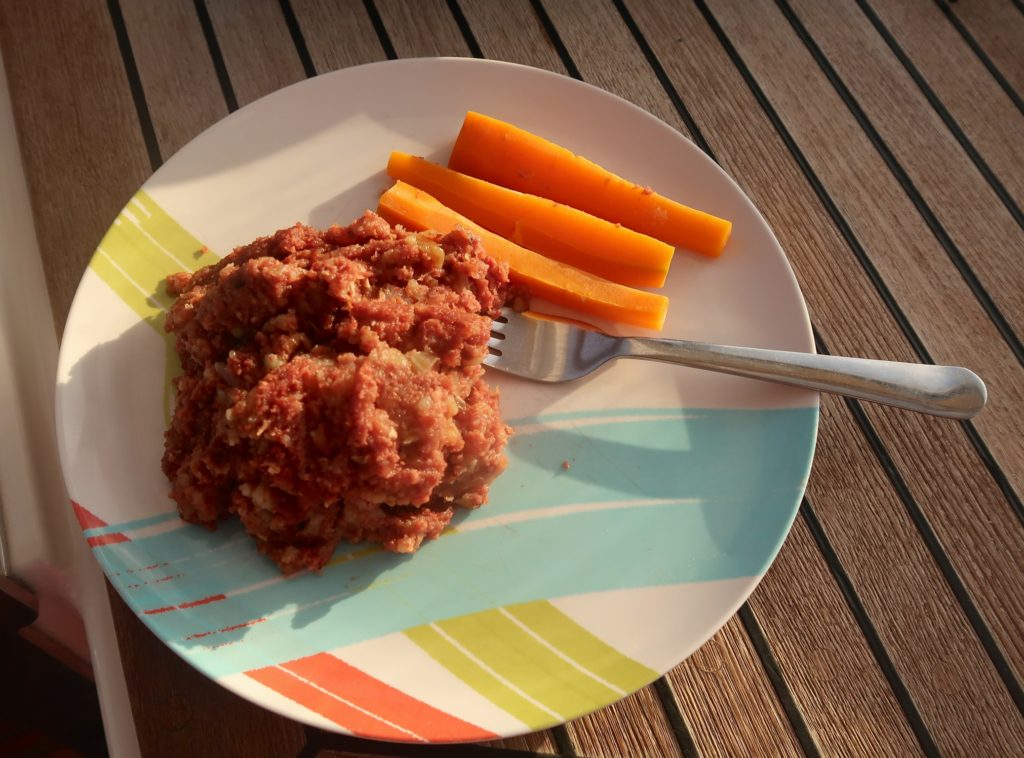
By our last day at sea I was sick of tinned food and finally put out the fishing line. I was about to give up when I had a strike! As we tried to net the good sized tuna, the fish wriggled violently and came off the line. We tried again and this time the fish fought hard, stripping line from the reel and dragging me across the cockpit – fortunately it came off the hook and escaped. Within minutes a third strike and this time we pulled in a nice albacore. Fresh fish for supper!
By the morning of our arrival we were both shattered. I woke at 6am as dawn was breaking and we had just arrived at the entrance to the Bay of Islands in the northeast of New Zealand.
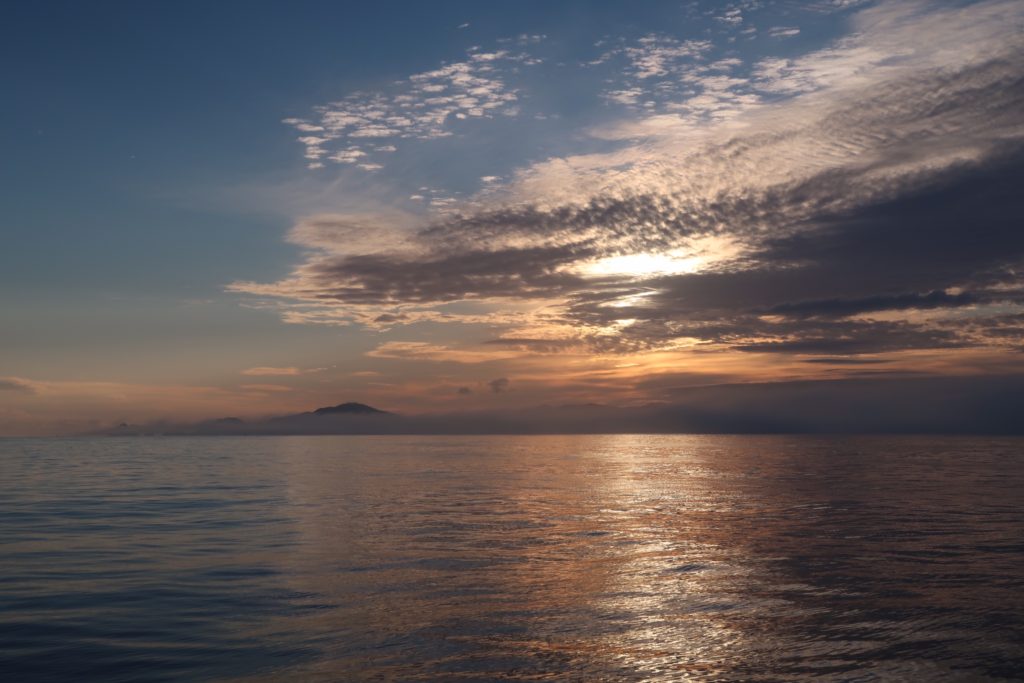
Ahead of us was a wall of dense fog. Relying only on our plotter to determine the way, we motored slowly, staring out into the silent, eery whiteness all around, passing little boats with anglers fishing, which suddenly loomed up from the gloom.
Eventually the fog cleared as the sun broke through and the surrounding land was revealed, disappointingly looking much like South Devon.
Within minutes of our arrival at the Customs’ Dock the Customs and Environmental Health were on board. Friendly and efficient, they removed our black bags of rubbish for incineration, confiscated our remaining jar of honey and the two pepper sprays that we’d bought in the Caribbean in case of intruders, and checked around the boat for anything they thought might harm New Zealand’s ecosystem.
Finally tied up at the marina in Opua it was great to be back on land, in civilisation, with hot showers, laundrette and free WiFi, and to meet up with friends we’d made along the way for drinks and meals in the Yacht Club. Within five days I was on a plane back home, from Auckland, in time to attend Sheri’s funeral in Bristol, leaving Hugh to finish getting Vega ready to be taken out of the water and to organise all the work that needed to be done on her whilst we were away.
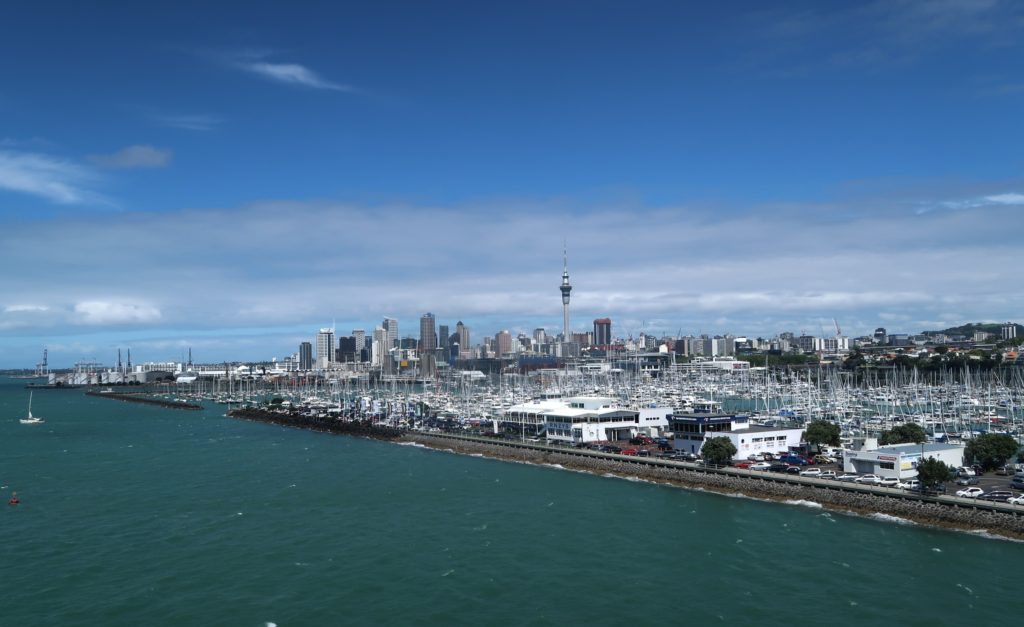
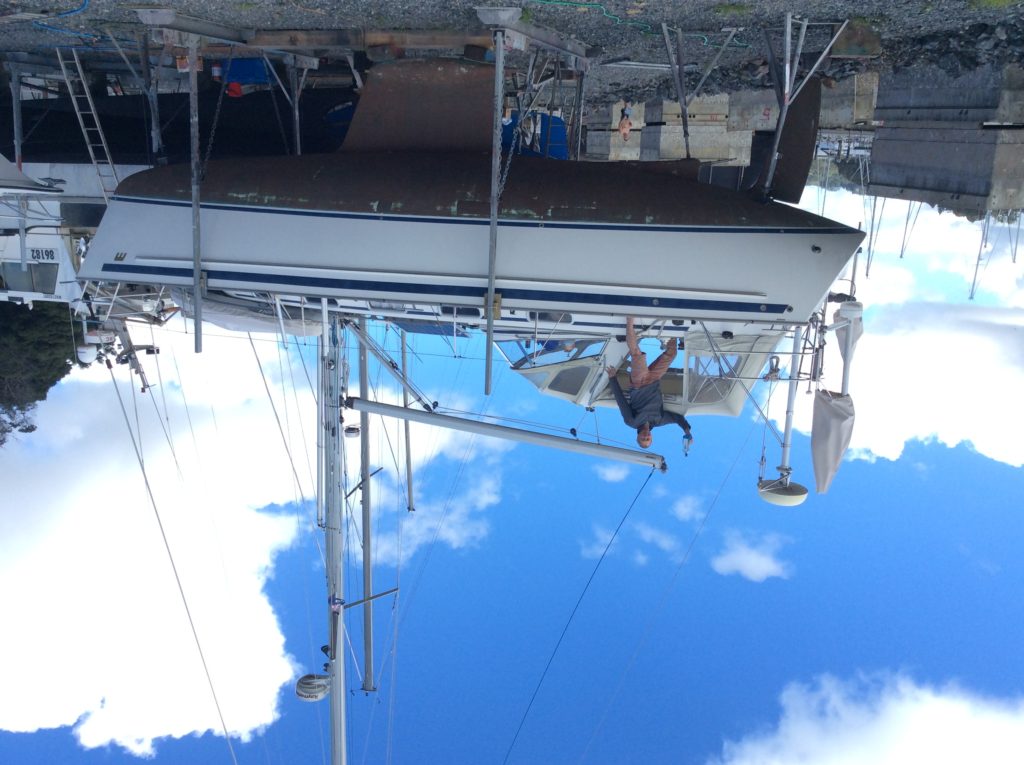
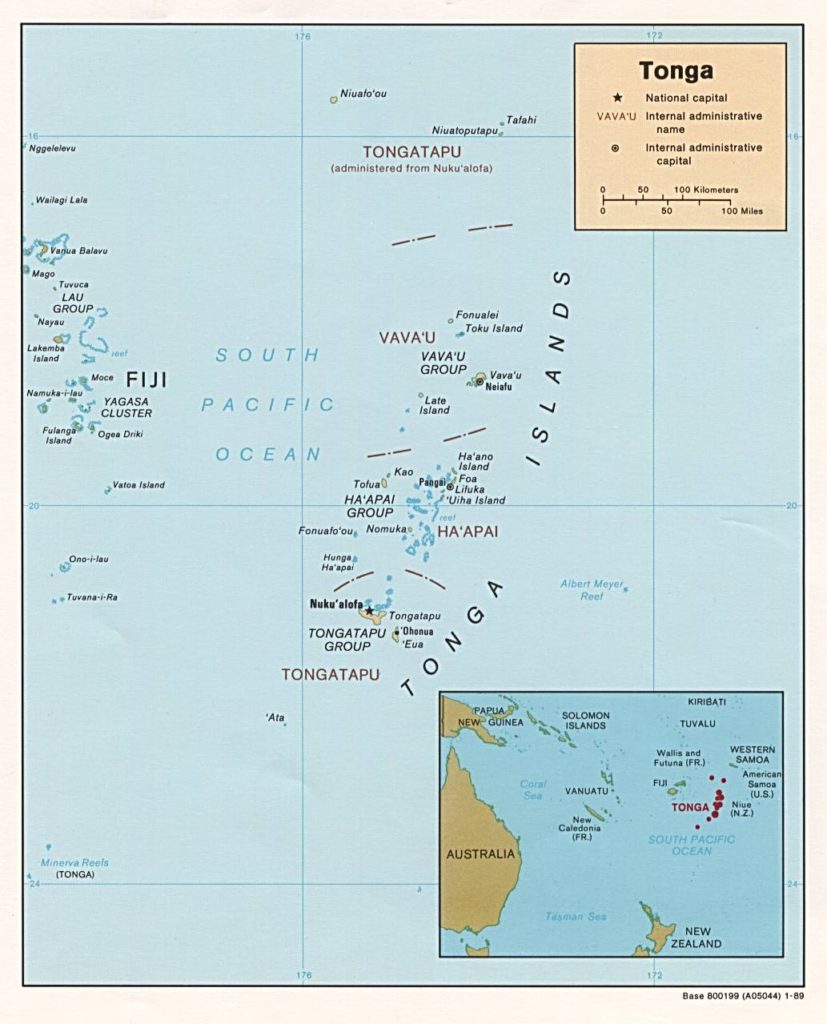
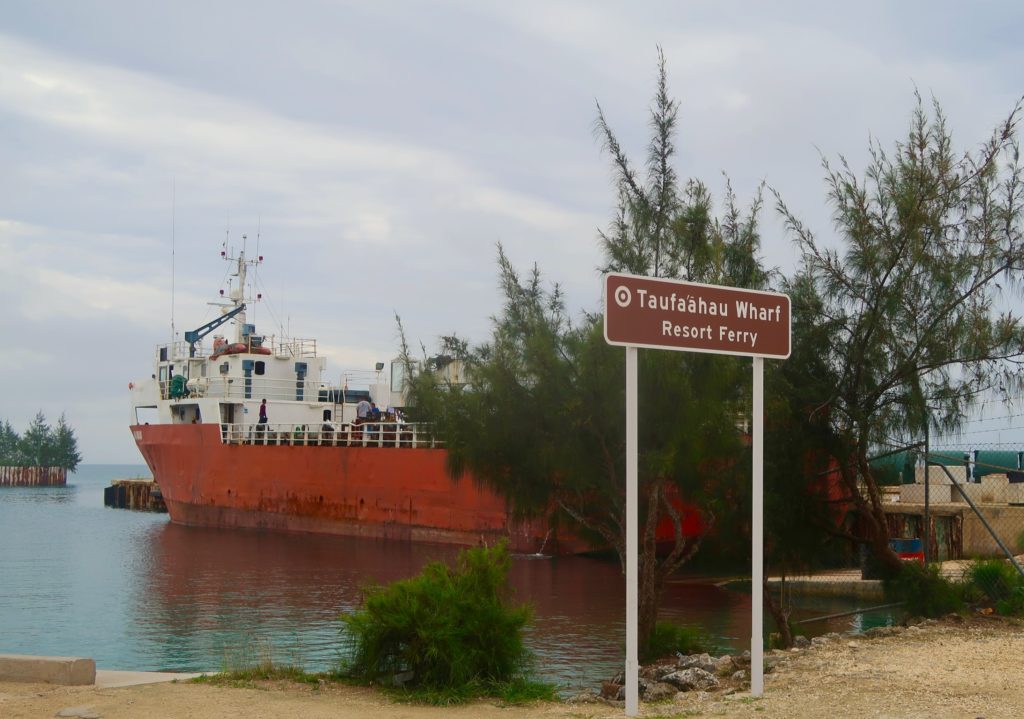
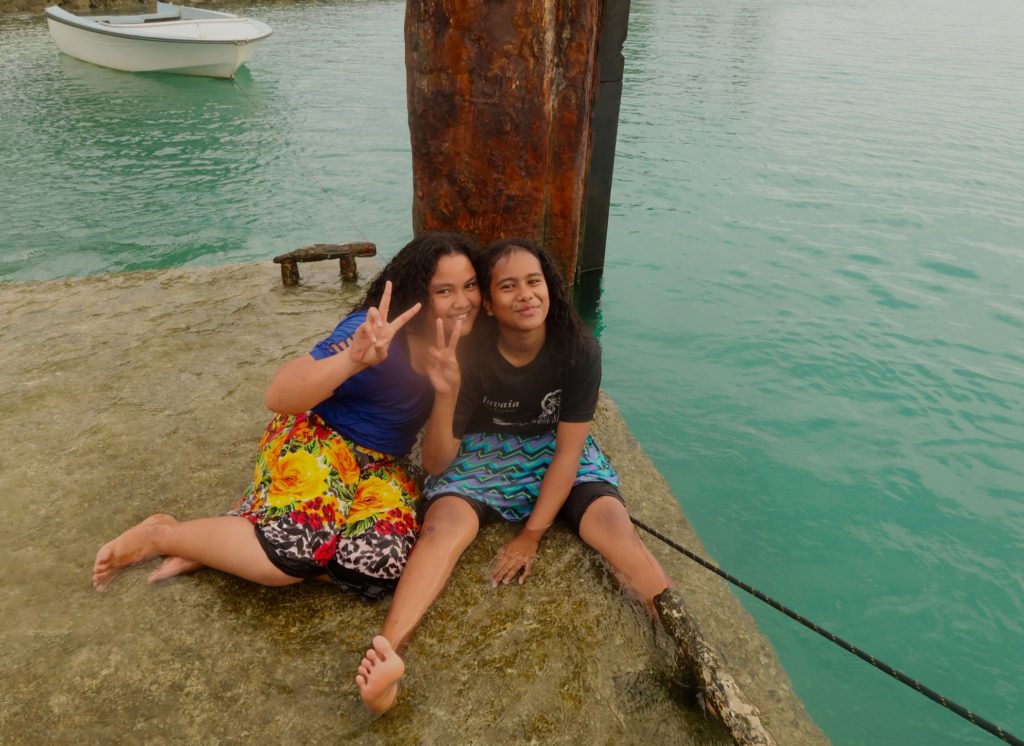
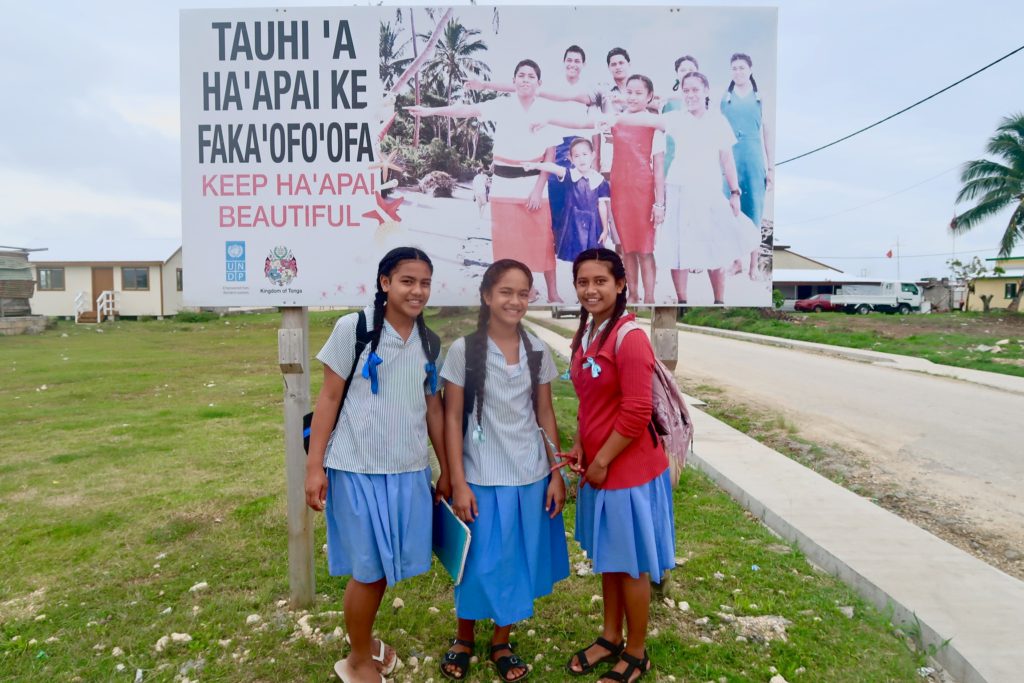
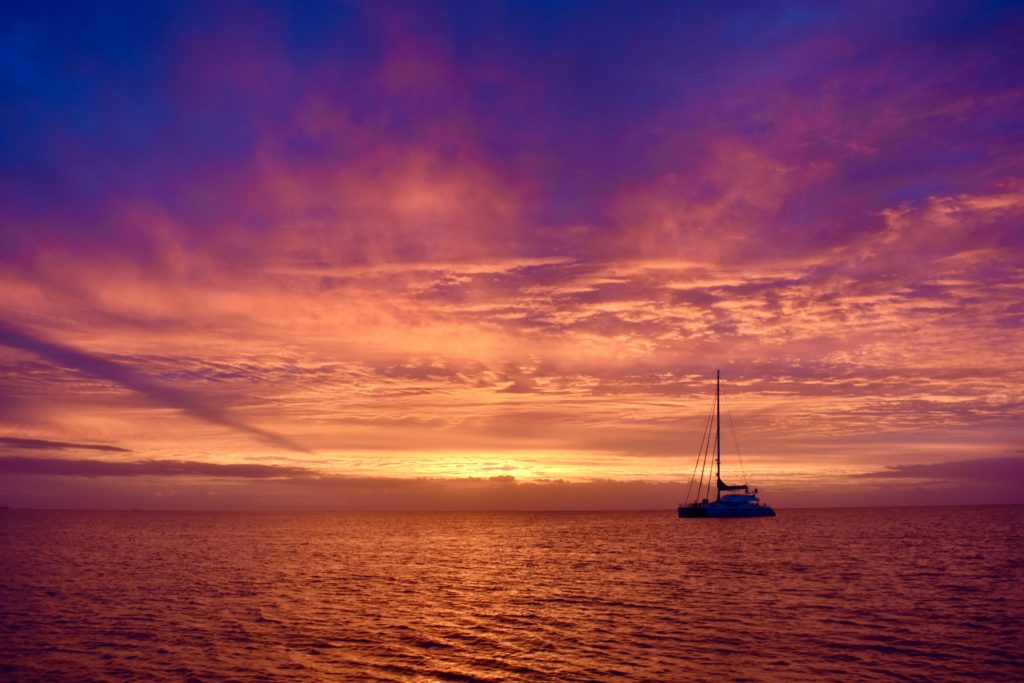
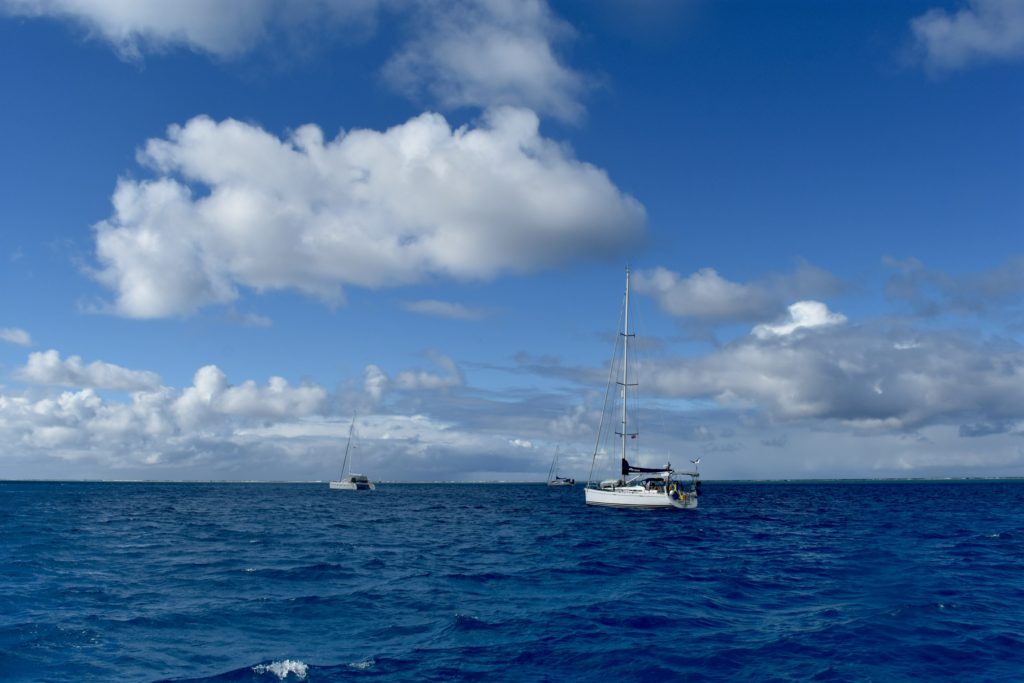
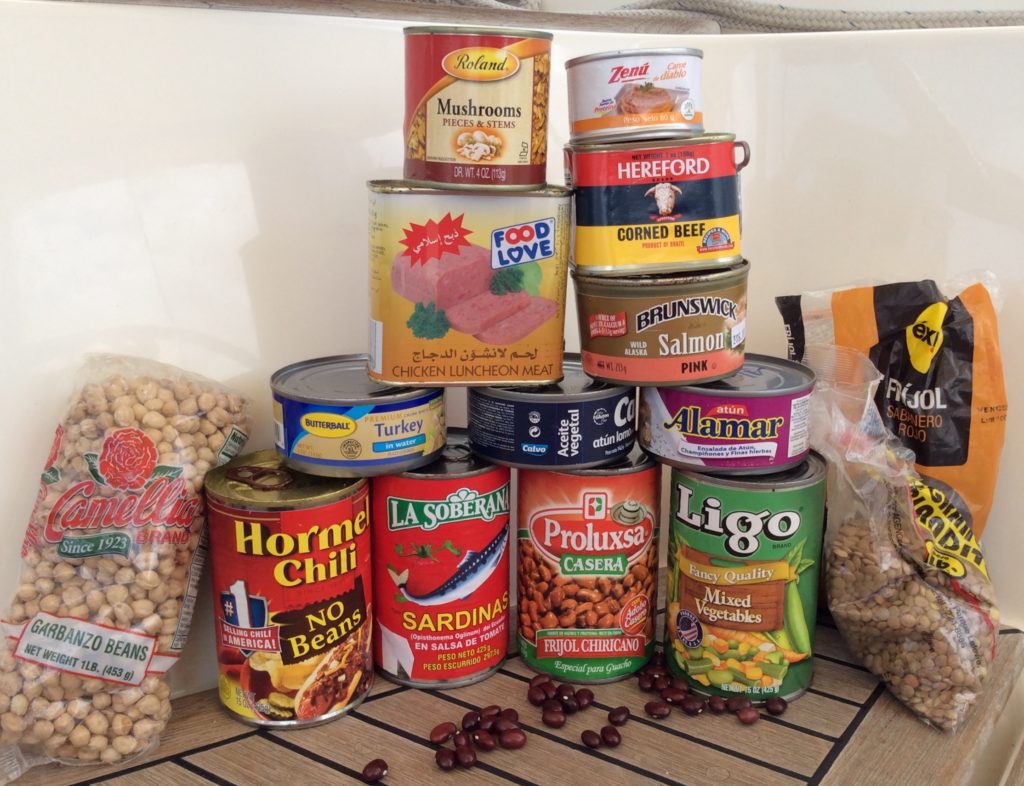
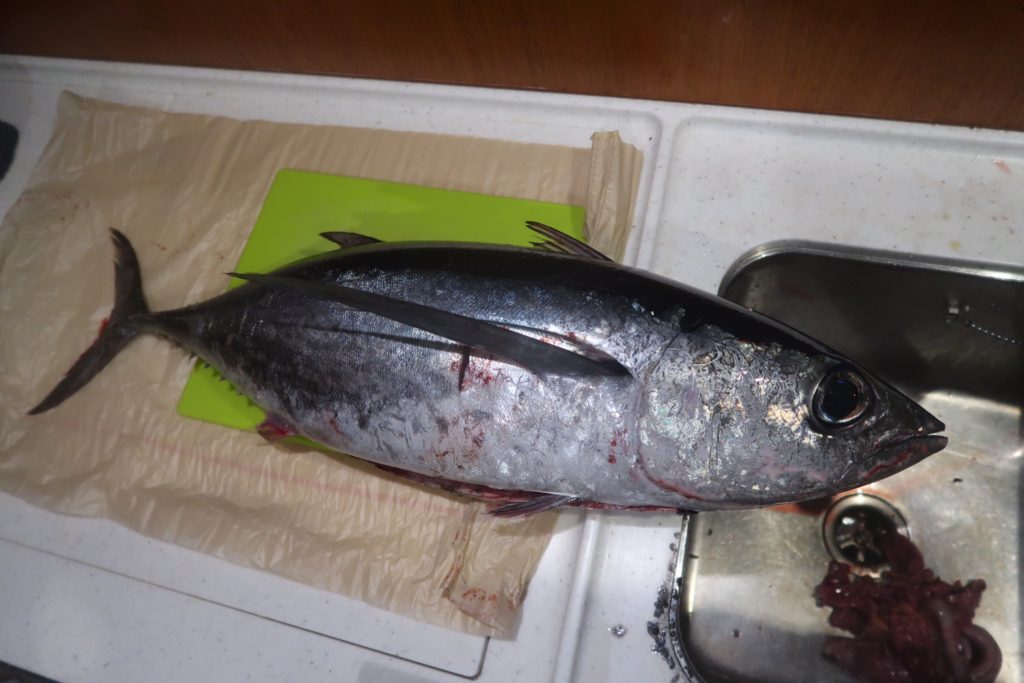
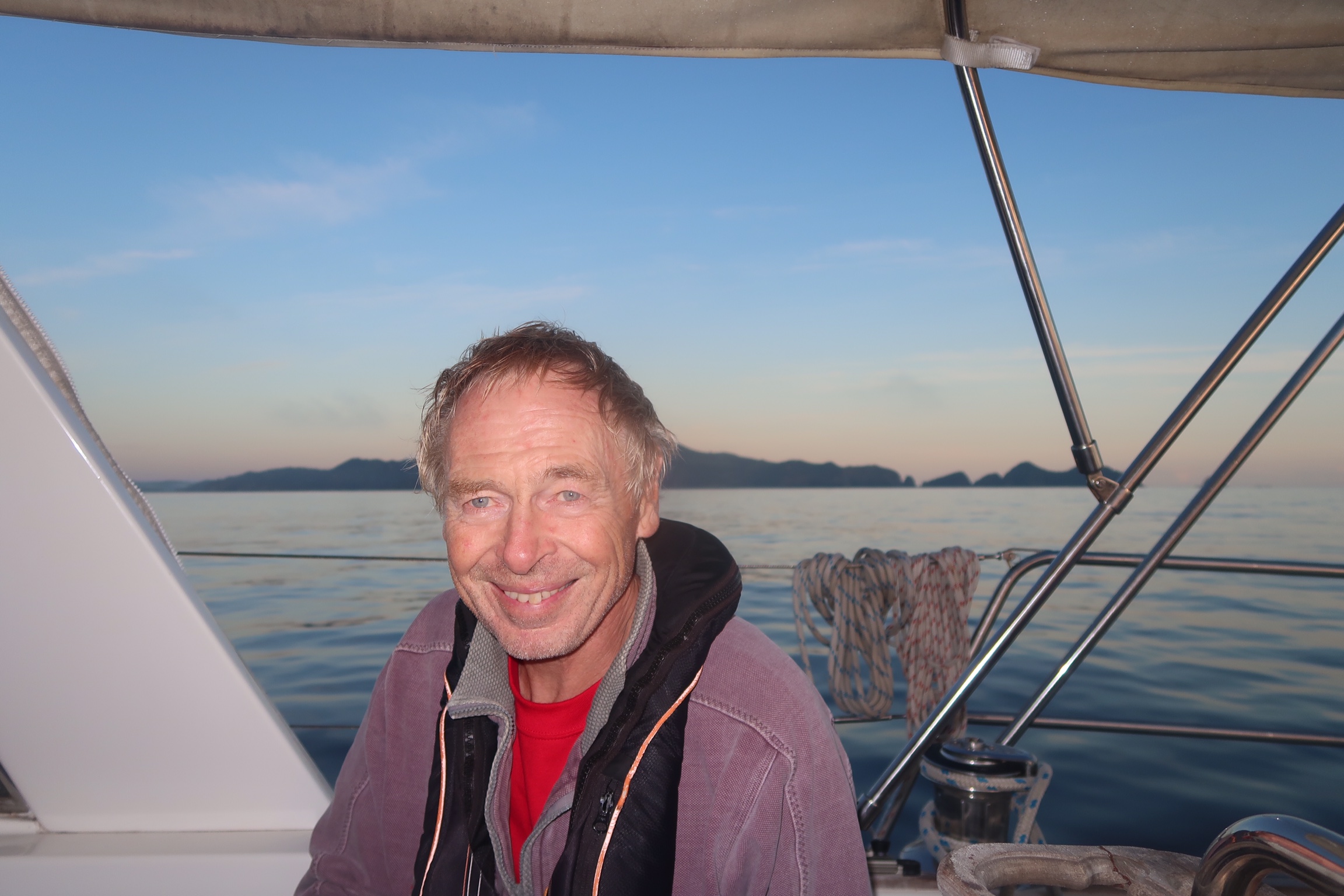
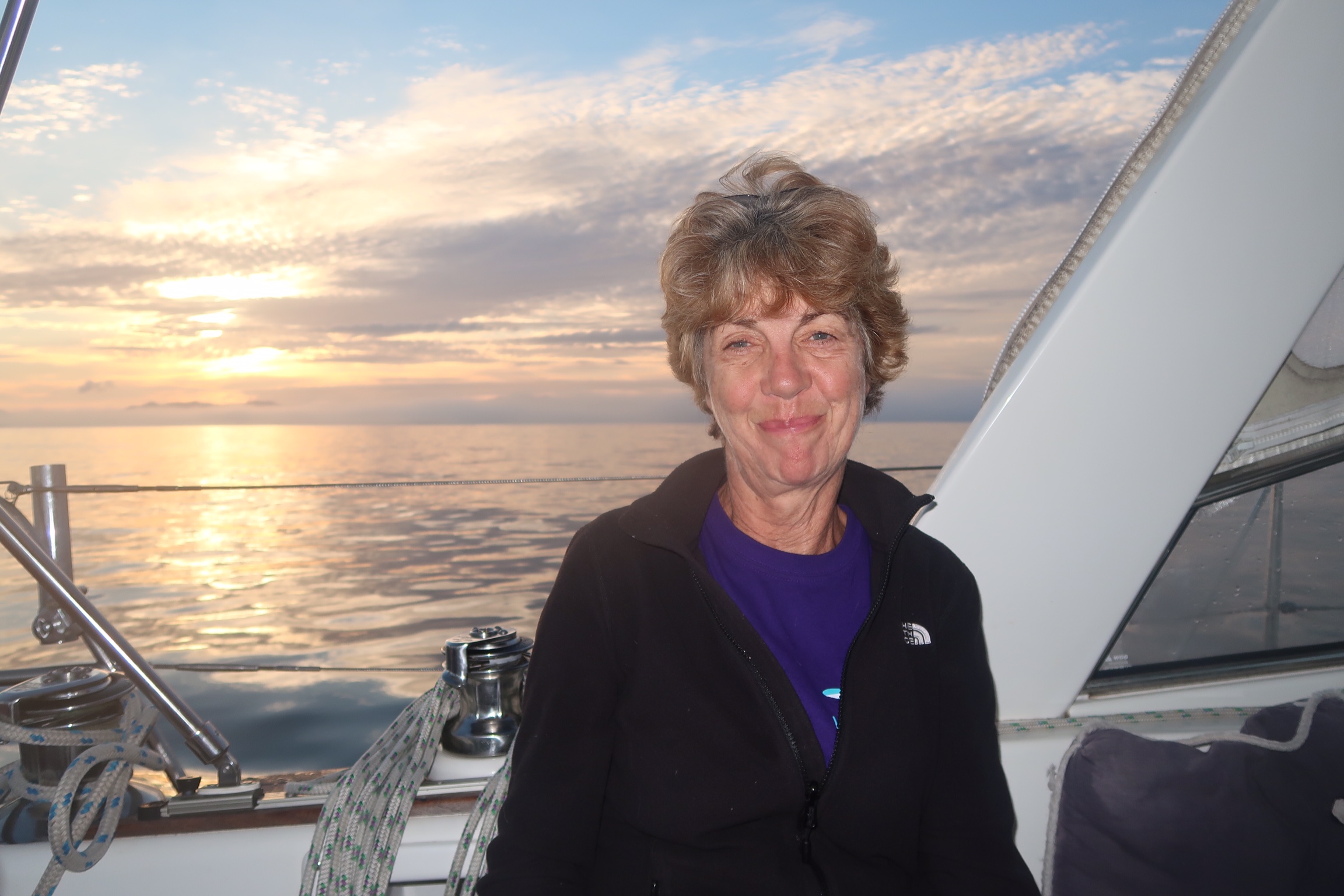
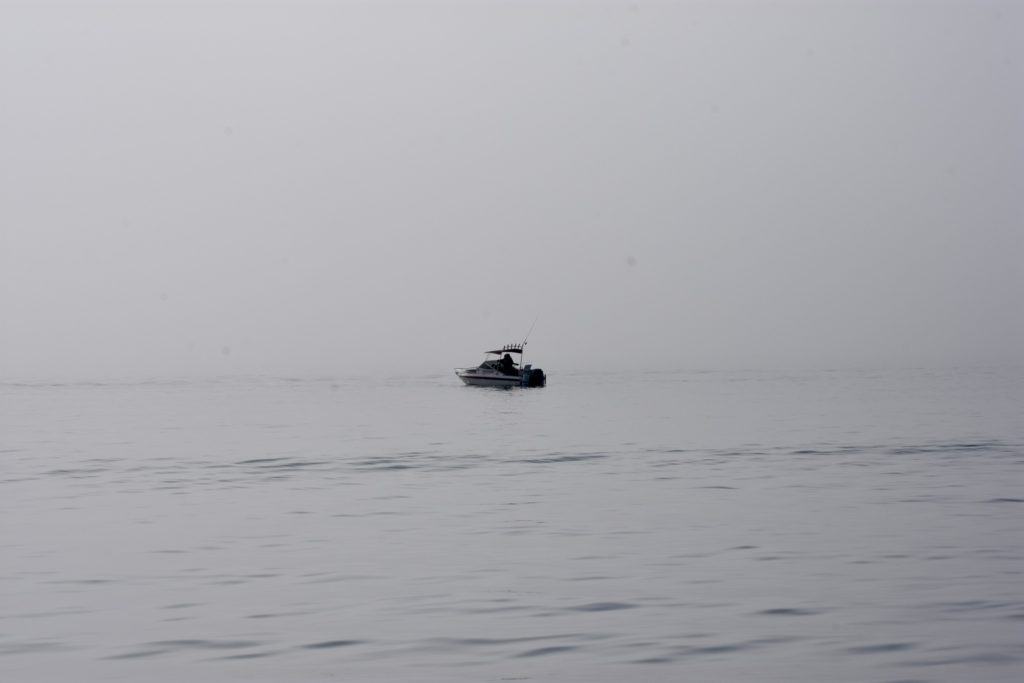
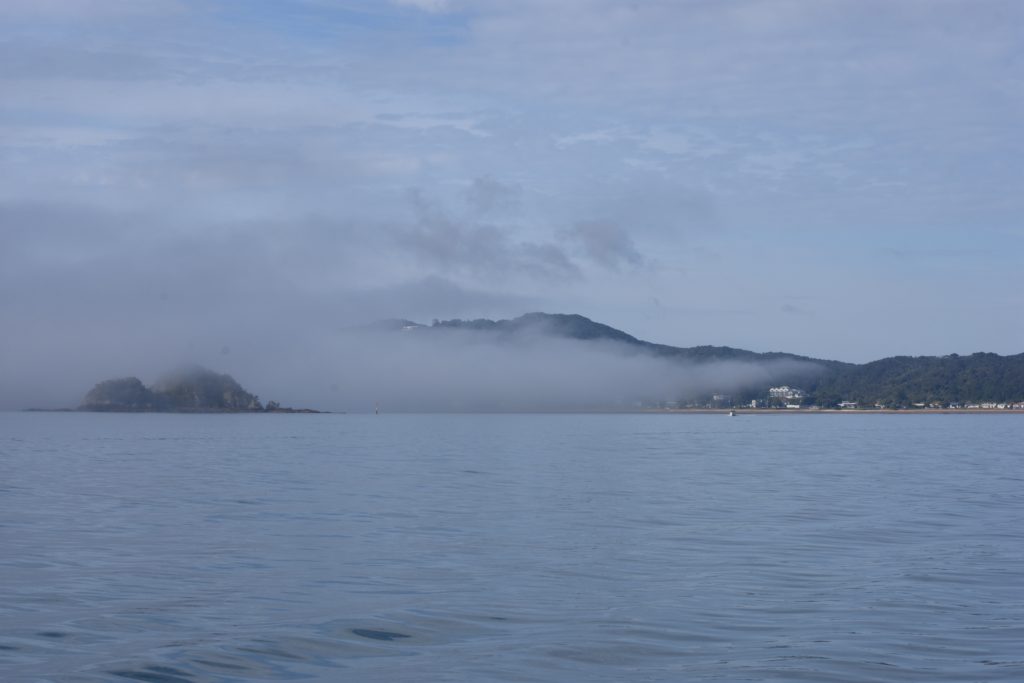
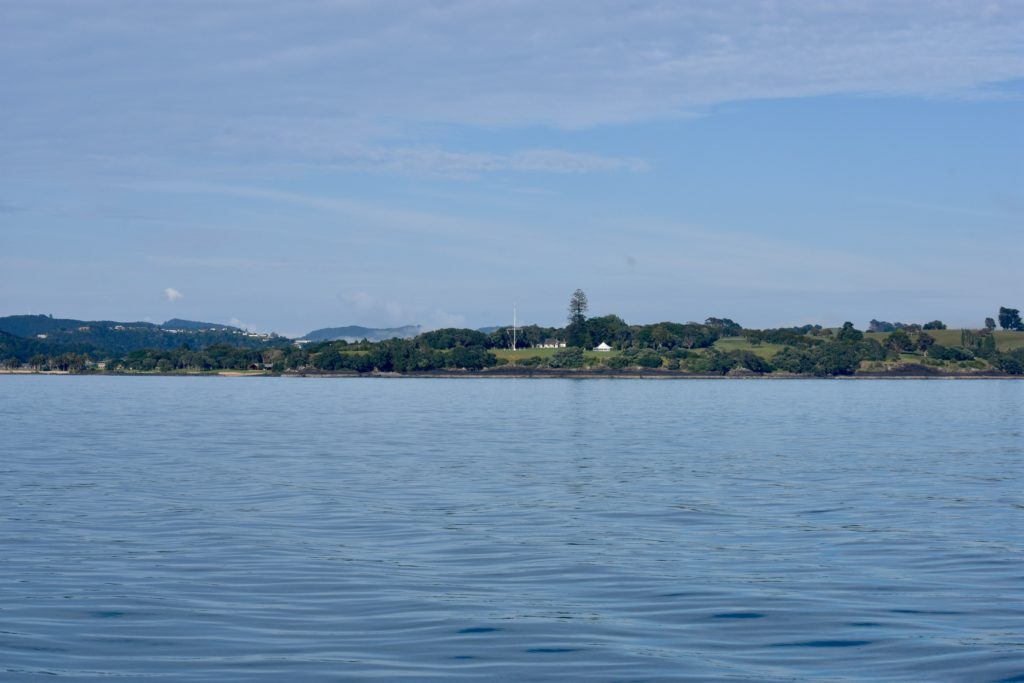
12 Comments
Nina and Ben
February 26, 2018 - 9:35 amLovely to hear from you again at the start of the next leg of your adventures.
We really enjoyed our ‘away day’ and look forward to another when you are next home. In the meantime we will follow your travels via this blog. Travel safely xx
PS You are missing the first real snow forecast for the West Country for some time – but I guess that’s not too difficult to bear!
annie
February 26, 2018 - 6:59 pmReally great to see you too. They had snow on South Island last week as hurricane Gita passed through xx
The Jetski
February 26, 2018 - 11:36 amAnother lovely read. Looking forward to your travels around NZ. I’ll make do with another Ryanair flight to Hamburg in the meantime! Take care….
annie
February 26, 2018 - 7:02 pmThanks Jetski… lovely to see you again over Christmas xx
Paul Bayley
February 26, 2018 - 8:46 pmThanks for this it does sound if you are having a great time and I think I am glad I am reading about it and not experiencing it as I do not have sea legs. Best wishes to you both
annie
April 13, 2018 - 3:44 amHi Paul. Good to hear from you. I am a landlubber at heart but the things we do for love ??
Reto
February 28, 2018 - 3:22 amWe really enyoed reading your blog and had some loughs too.
But we definitely have to speak with Hugh. Giving Neptune some bisquits!! That rather upsets him that calms him down. We normally give him a good swallow of Beer or Rum 😉 and better not the cheap stuff I alway tell Angela
annie
April 13, 2018 - 3:42 amDear Reto. I agree completely. Rum it will be from now on xx
Jerry
March 4, 2018 - 10:36 amThanks for taking on board my suggestion of more pictures of food – I rely on your blog for culinary inspiration. I particularly liked the presentation of the corned beef hash – so clever to balance the carrots with the orange stripes on the plate! Jerry xx
annie
April 13, 2018 - 3:41 amThanks Jerry. In order for food to appeal presentation is all important…. especially with corned beef hash xx
Alco, Roze and Kin
April 10, 2018 - 11:10 pmSo good to bump into you guys down at National Park train station last week! Hope all is going well with the boat preparations for the trip back up to the tropics.
annie
April 13, 2018 - 3:40 amHiya
A wonderful surprise to see you all again too and nice to hear from you. We are back in the Bay of Islands marina after our amazing road trip, still on the hard but hopefully back on the water in a couple of days. The jobs are slowly getting ticket off the list and, all well, we’ll be off north sometime in May.
Good luck with finding a job in NZ.
Annie and Hugh x